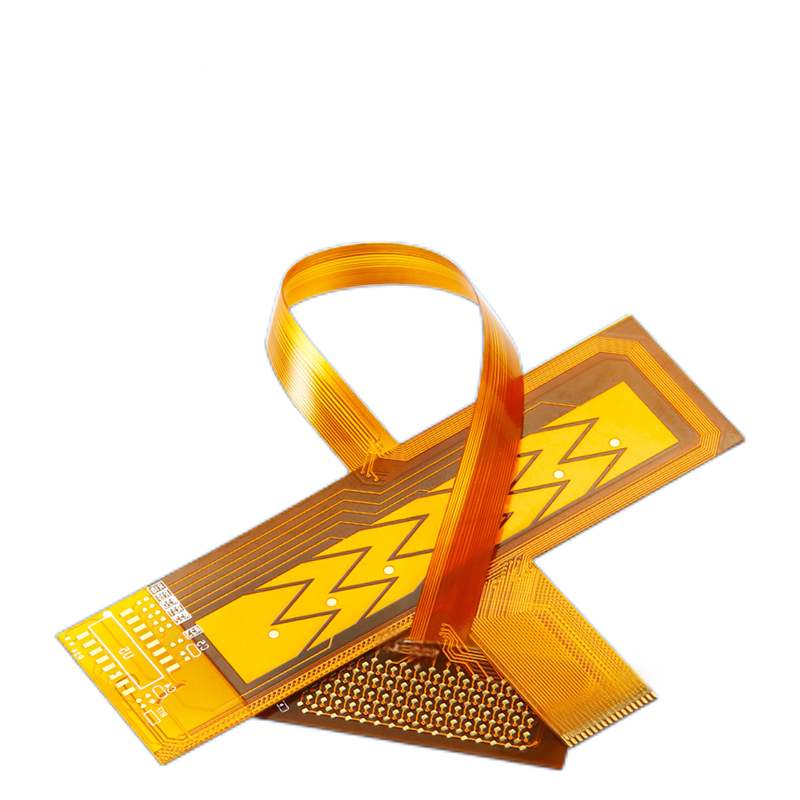Search
3D Printing and Additive Manufacturing: Transforming FPC Industry
- Feb 06,2025
-
Share
In the fast - evolving landscape of the Flexible Printed Circuit (FPC) industry, technological innovation serves as the bedrock for continuous advancement. Among the vanguard technologies, 3D printing and additive manufacturing have emerged as revolutionary forces, unfurling a host of novel opportunities for FPC fabrication.

3D Printing Redefining FPC Design and Production
Historically, FPCs were predominantly restricted to relatively planar and two - dimensional configurations. However, 3D printing technology has transcended these constraints. It empowers the creation of FPCs with intricate three - dimensional geometries, which are pivotal for applications where spatial resources are scarce and precise component integration is imperative. For example, in the aerospace sector, a leading aircraft manufacturer grappled with the challenge of interconnecting multiple sensors and electronic components within the cramped confines of the aircraft's wings. By leveraging 3D - printed FPCs, they were able to engineer custom - shaped circuits that seamlessly conformed to the existing structures, thereby significantly enhancing the overall efficiency of the electrical system. This not only optimized the signal transmission but also contributed to the reduction of overall weight, a crucial factor in aerospace design.
Customization represents another substantial advantage of 3D printing in FPC production. Consider a medical device company engaged in the development of a personalized wearable health monitor. With 3D - printed FPCs, they could meticulously tailor the circuit layout in accordance with the unique body contours of diverse users. This customization ensured not only maximum comfort for the wearer but also precise data collection, thanks to the intimate contact enabled by the customized FPCs. Achieving this level of customization would have been an arduous task, if not outright impossible, with traditional FPC manufacturing methodologies. The ability to adapt to individual body shapes also enhanced the device's long - term usability, as users were more likely to continue using a comfortable device.
The Pursuit of Higher Precision, Efficiency, and Reliability
Notwithstanding the remarkable headway made, there remain areas ripe for further enhancement. Researchers globally are actively engaged in augmenting the precision of 3D - printed FPCs. The objective is to attain sub - micron - level accuracy in trace widths and component placement. This high - level precision is indispensable for high - performance FPCs deployed in advanced electronics, such as those used in high - speed data transfer applications that demand ultra - fine traces for minimizing signal interference and ensuring high - speed, error - free data transmission.
Efficiency constitutes another pivotal aspect. At present, the 3D printing process for FPCs can be time - intensive. Scientists are delving into strategies to expedite the printing process without compromising on quality. This involves the development of faster - curing materials, which can reduce the time required for each layer to solidify, and more advanced printing algorithms. These algorithms can optimize the printing path, reducing unnecessary movements and thus shortening the overall printing time.
Reliability is also a primary concern. Given that FPCs are frequently employed in critical applications, guaranteeing the long - term stability and performance of 3D - printed FPCs is of utmost importance. Through comprehensive testing and in - depth material research, the industry is striving to develop 3D - printed FPCs that can endure harsh environments and repeated mechanical stress. High flexural life, a key indicator of an FPC's reliability, is being targeted through material optimization and structural design improvements. This ensures that the FPCs can maintain their electrical integrity even after numerous bending cycles, a crucial requirement in applications like wearable devices that are constantly in motion.
Material Development for 3D - Printed FPCs
The development of suitable materials lies at the core of 3D - printed FPCs. Scientists are endeavoring to create conductive inks with optimal electrical conductivity, high - flexibility polymers for the substrate, and materials that can resist heat, chemicals, and mechanical wear. For instance, a recent breakthrough in the development of a graphene - based conductive ink has exhibited great promise in enhancing the conductivity of 3D - printed FPCs. This advancement makes them eminently suitable for high - speed data transmission applications, where rapid signal propagation is essential. The high - conductivity of the graphene - based ink reduces signal attenuation, enabling faster and more reliable data transfer over longer distances within the FPC.
Shenzhen Huaruixin Electronics Co., Ltd., a professional FPC design and production manufacturer, has accumulated extensive expertise in both traditional and innovative FPC manufacturing, including 3D - printed FPCs. We wholeheartedly welcome new and old friends to engage in communication and discussion with us. We firmly believe that through collaborative endeavors, we can further propel the innovation and development of the FPC industry. Let's jointly explore the future of FPCs and unlock their full potential!

Let’s talk! We’ll provide the perfect solution for you!
-
 Huaruixin Electronics mainly produces printed circuit boards as the core business, to provide customers with one-stop solutions for FPC/PCB production, components sourcing and Assembly.
Huaruixin Electronics mainly produces printed circuit boards as the core business, to provide customers with one-stop solutions for FPC/PCB production, components sourcing and Assembly. - WHAT WE DO — PCB Design Solutions — Flex PCB Production — Components Sourcing — FPC&PCB Assembly
- PRODUCTS — Single Sided Flexible Circuits — Double Sided Flexible Circuits — Multilayer Flexible Cirucits — Rigid-Flex Circuits — FPC Assembly — PCB Assembly
- CAPABILITY — FPC Capability — Rigid-Flex Capability — PCB Capability — Assembly Capability
- Copyright © 2024 Shenzhen Huaruixin Electronics Co., Ltd. All Rights Reserved.
- Design By BONTOP


